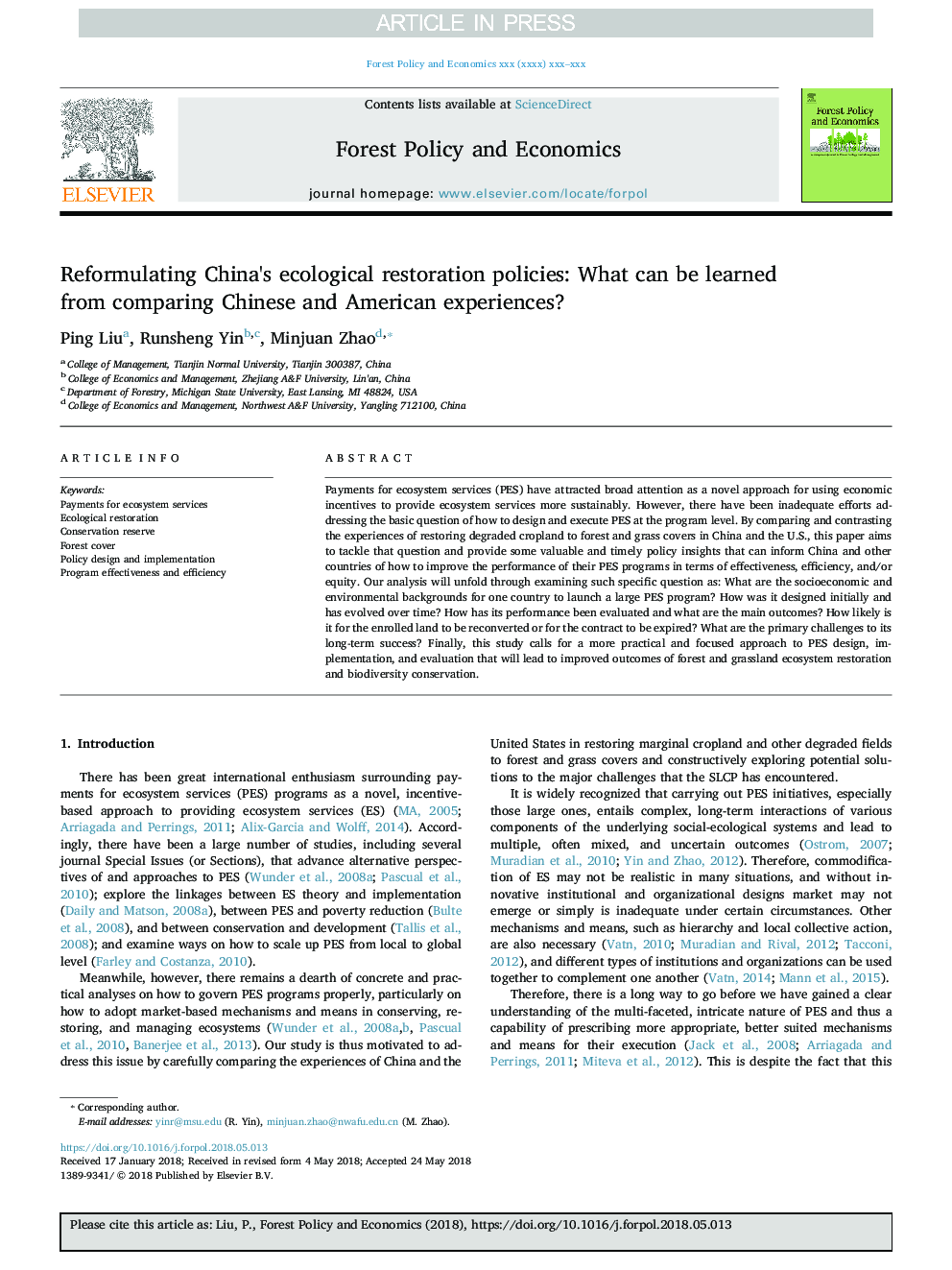| Article ID | Journal | Published Year | Pages | File Type |
|---|---|---|---|---|
| 11012826 | Forest Policy and Economics | 2019 | 8 Pages |
Abstract
Payments for ecosystem services (PES) have attracted broad attention as a novel approach for using economic incentives to provide ecosystem services more sustainably. However, there have been inadequate efforts addressing the basic question of how to design and execute PES at the program level. By comparing and contrasting the experiences of restoring degraded cropland to forest and grass covers in China and the U.S., this paper aims to tackle that question and provide some valuable and timely policy insights that can inform China and other countries of how to improve the performance of their PES programs in terms of effectiveness, efficiency, and/or equity. Our analysis will unfold through examining such specific question as: What are the socioeconomic and environmental backgrounds for one country to launch a large PES program? How was it designed initially and has evolved over time? How has its performance been evaluated and what are the main outcomes? How likely is it for the enrolled land to be reconverted or for the contract to be expired? What are the primary challenges to its long-term success? Finally, this study calls for a more practical and focused approach to PES design, implementation, and evaluation that will lead to improved outcomes of forest and grassland ecosystem restoration and biodiversity conservation.
Related Topics
Life Sciences
Agricultural and Biological Sciences
Forestry
Authors
Ping Liu, Runsheng Yin, Minjuan Zhao,
